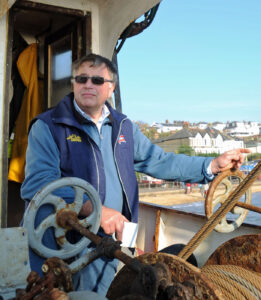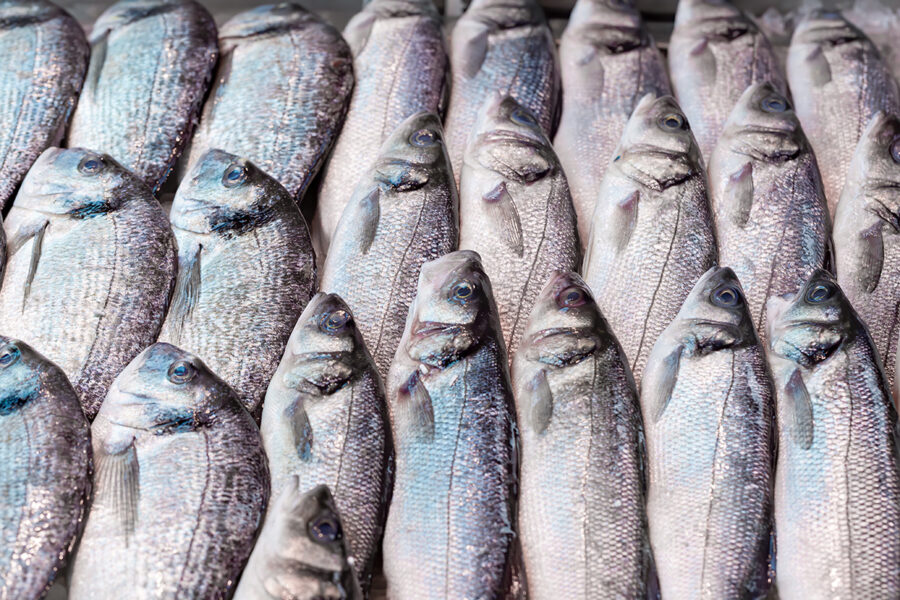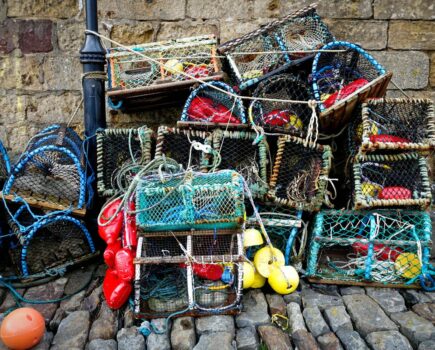NFFO chairman Paul Gilson has called for an increase in the bass bycatch trawling allowance so that less is wasted, reports Tim Oliver.
Bass is ‘everywhere’, he says, and the current 5t bycatch allowance for trawlers should be increased to 20t.
Commenting on the recent Policy Lab online debate on the future management of bass (see opposite), he said that the bass science is lagging behind the reality in the seas.
“It appears to me the fishery is way in front of the science,” he told Fishing News.
“We can stand and shout there is bass all the way up the east coast as far as southern Scotland, and likewise round the southern coast and up the west coast – there is bass everywhere – but it doesn’t seem to make any difference.
“I’ve said to them many times that the last thing we want is a free-for-all, but when it’s being caught as a bycatch you really do need to have more than 5%, because guys will save every fish they catch to make up the percentage.

Paul Gilson: “We have to adapt, and management has to adapt.”
“We need to make it 20% or something like that for the trawling guys, and then we’re not going to waste so much. If we can look after things, we can make the best of it.”
He said there is currently very little to catch on the east coast, and that the Thames in particular has been badly hit by the development of the Thames Gateway container port and the huge dredging operations connected with it.
Work is starting on another new 430m quay at Thames Gateway and the ships going up the river are ‘massive’, said the NFFO chairman, who lives at Southend on the Thames estuary, adding that he had only been notified of the development on 24 August.
He said the Thames had altered enormously since the development of London Gateway, and from being a vibrant fishery only a few years ago is now almost barren – as he had warned would happen.
“There’s nothing I can say – only that ‘I told you so’,” he said.
“We can blame a bit on the pulse beamers because of their efficiency, but nothing is going on here and hasn’t been for several years – there’s no recovery, there’s no great amount of sole here. We’ve only got sole and skate, and bass when they let us catch it – it’s pretty grim, really.”
He said from his home he can see downriver towards Whitstable and upriver towards Canvey Island. “I think one day this year I saw a fishing boat – 15 years ago or so I would see six or seven every day. There’s just nothing there, and I mean nothing – people can’t make a living.”
Plaice is another species that has disappeared, despite being so abundant it was ‘a pest’ at one time. Paul Gilson said that ‘not that long ago’ when he was pairtrawling in the Queen’s Channel, they caught so much plaice the boats were pulled back to the gear when they hauled.
“We filled the deck of one boat all the way round, and we had 40 boxes on my deck that we were filling up as we were going. We didn’t shoot again. That was only an hour and a half’s steam from Whitstable.”
There is no demand for skate because adverse publicity from greens about skate stocks had killed demand, he said – yet the area was ‘awash with skate’, particularly thornback rays. These fish appeared to be going against the trend of species like cod and sole, and are moving south.
“I’ve told the scientists there’s some really weird stuff going on,” said Paul Gilson.
“Skate, thornbacks are going against the warming trend because it’s going in the opposite direction. They appear to have gone right to the tops of the rivers, like the Blackwater and the river Crouch. At Battlebridge where the freshwater meets the seawater, they are within 200m to 300m of the old lock gates. We’re awash with skate – there’s something odd going on.
“Fish are in different places, and we’ve got to change. We have to adapt, and management has to adapt, faster than it is now – it must be more flexible. It’s no good setting things in stone, because tomorrow it could be different.”
Paul Gilson said he was enjoying his new role as chairman of the NFFO, talking to different people in different areas and gaining new perspectives.
“It’s fascinating,” he said.
“There are some bits of doom and gloom, certainly on the east coast, but on the west coast and south coast it’s pretty exciting.
“Tuna is coming on – there’s no doubt in my mind there will be a tuna fishery within a few years. It may be limited and you may have to pull the lottery ticket to get the opportunity, but it’s really exciting.
“There’s also been reports of a swordfish being seen off the Isle of Man, which is another sign of global warming and the changes it’s bringing in the seas.”
This story was taken from the latest issue of Fishing News. For more up-to-date and in-depth reports on the UK and Irish commercial fishing sector, subscribe to Fishing News here or buy the latest single issue for just £3.30 here.








